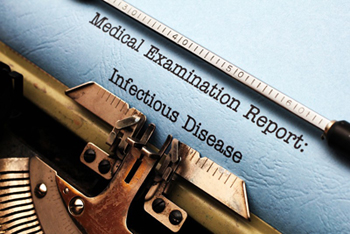 A recent report published by the Centers for Disease Control and Prevention (CDC) reveals that infectious diseases (ID) still remain a threat to U.S. public health despite the control measures taken. Several measures were taken by the CDC as a part of infection control in healthcare facilities including prevention strategies for seasonal influenza, tuberculosis infection control program, safe use of single use medications and much more. However, the report says that these types of diseases continue to demand a substantial toll on both health care and health care resources.
A recent report published by the Centers for Disease Control and Prevention (CDC) reveals that infectious diseases (ID) still remain a threat to U.S. public health despite the control measures taken. Several measures were taken by the CDC as a part of infection control in healthcare facilities including prevention strategies for seasonal influenza, tuberculosis infection control program, safe use of single use medications and much more. However, the report says that these types of diseases continue to demand a substantial toll on both health care and health care resources.
Infectious illnesses are typically acute and unambiguous in nature and their onset in a healthy host can be abrupt and unmistakable. With the absence of therapy, acute diseases cause the host to either die quickly or recover spontaneously often with lifelong immunity to the infecting pathogen. Not only that, some kind of infectious illnesses are transmissible to others, but their transmission mechanisms are comparatively less understood. Due to these reasons, IDs pose substantial challenges to public health. The following priority areas are described in the report.
- Endemic Diseases – Millions of Americans are diagnosed with endemic diseases including chronic hepatitis, HIV and other sexually transmitted infections, with racial and ethnic minorities disproportionately affected. If 75% of chronic hepatitis C virus cases and hepatitis C virus deaths occur in baby boomers, about half of the sexually transmitted infections occur in young people. Even though tuberculosis records are low, foreign-born individuals, minorities, drug users, and the homeless are disproportionately affected with an estimated 11 million cases of latent tuberculosis.
- HealthCare-Associated Infections – It is estimated that one in five patients deal with healthcare-associated infections in hospitals which amounts to nearly 99,000 deaths (excluding the consequences of infections in non-hospital settings) and causes involve unsafe medical practices and contaminated products. If the rates of blood line infections, surgical site infections, and catheter-associated urinary tract infections lowered, the rates of clostridium difficile infections went up with gram-negative drug-resistant bacterial infections adding concerns.
- Food borne Infections – It is estimated that around 48 million food borne infections lead to 128,000 hospital admissions and 3000 deaths every year. Though the rates of Escherichia coli 0157 illness declined, the rates of Salmonella illness still remains stable.
- Vaccine-preventable Diseases – Even though substantial reduction has been made in the burden of vaccine-preventable diseases, several cases and outbreaks persist owing to many factors such as vaccine uptake for papillomavirus being slow, outbreaks linked to travel increasing and more. Parental decision against immunization plays a crucial role as well.
- Emerging and Reemerging Diseases – If West Nile Virus is behind the majority of arboviral diseases in the United States, Lyme disease is the most common vector-borne disease. Sin Nombre Virus, Middle East Respiratory Syndrome (MERS) coronavirus, swine flu variants, Dengue fever, Chikungunya fever and Rocky Mountain Spotted fever are the notable pathogens. A recent report shows that Chikungunya virus is spreading in America at an alarming rate.
Antimicrobial resistance still remains a global health crisis which requires immediate action. However, CDC report says that in order to control infectious illnesses, major priority will be given to the integration of scientific and technological advances in molecular diagnostics and bioinformatics into public health. Better co-ordination between governments, health care experts, the industry and public are necessary to effectively reduce the burden of these diseases.
Primary care physicians also play a vital role in preventing infectious illnesses as they can treat the most common infections. It is their responsibility to refer the patient to an ID specialist if complicated or rare infections are present or suspected and work closely with them. The physicians should also transcribe the consultation reports of patients accurately so that the ID specialists can review the medical data correctly and determine the cause of the problem. With Obamacare, physicians will see more patients with ID symptoms as more people are getting insured. This will obviously increase the medical documentation and transcription needs in physician offices.

